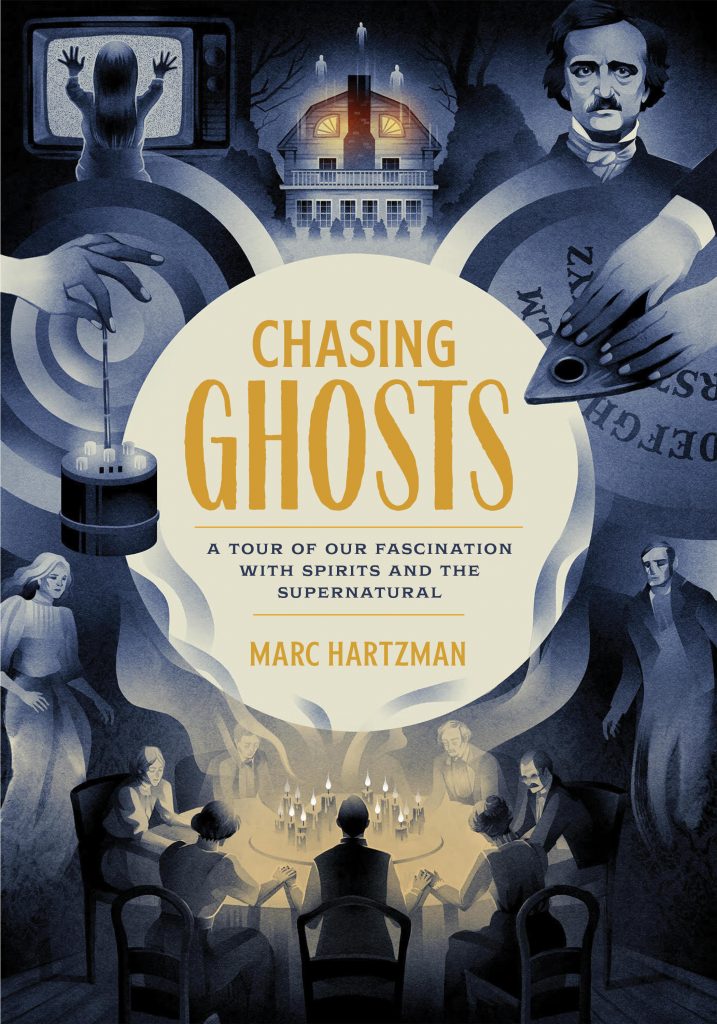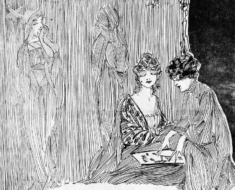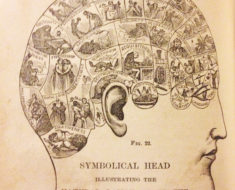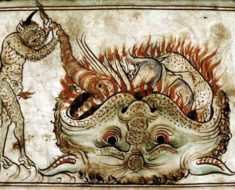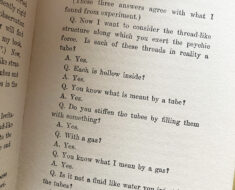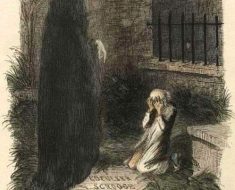Psychical researcher Hereward Carrington spent decades studying mediums who claimed to communicate with the dead. He was most impressed by Eusapia Palladino, who was known for levitating tables, moving furniture, manifesting sounds of voices, and having a cool breeze emanate from a scar in her forehead. Despite other researchers catching her cheating, Carrington maintained his belief that her powers were genuine. He argued that Palladino was expected to perform so frequently that she felt pressured to please her audiences, and sometimes that required cheating. After all, how could anyone expect the spirits to accommodate her at every single séance?
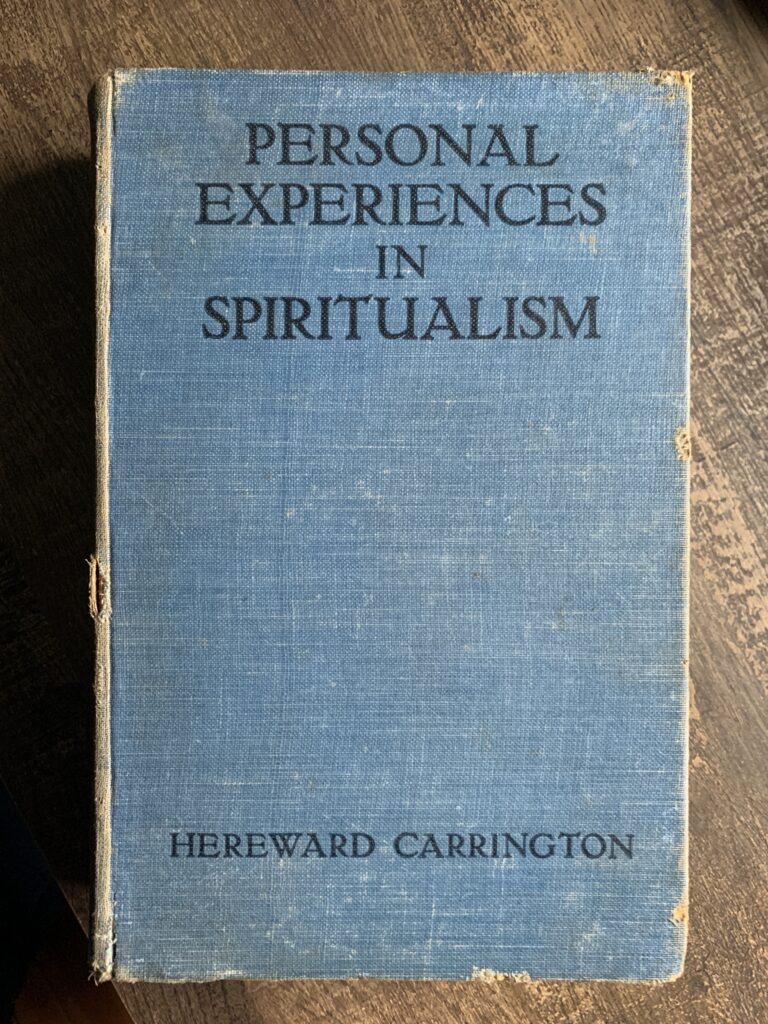
He recounts many remarkable adventures in his 1913 book, Personal Experiences in Spiritualism. One of them took place in August 1907, when he met with a spirit photographer in Lily Dale, New York. In the example, Carrington describes his encounter with a Mr. A. Norman in the spiritualist community. I’ll leave the story to his own words:
On arriving at Mr. Norman’s house I was obliged to wait for some time on the veranda, as he was busy inside the house with a “customer.” When he came out, I was invited to sit “just where I was,” and the medium disappeared into the house, and the next minute came out, carrying a large camera and two plates — already in the slide, prepared. There was a white chalk mark on one side of the “double-back ” plate slide (a slide which holds two places) and this side was carefully inserted foremost. Mr. Norman erased the chalk mark with his finger as he inserted the slide into the camera. I posed, and the photograph was taken.
Next we went indoors. The plate slide was reversed, and the room placed in almost total darkness. I was informed that “the spirits would materialise their own light,” and that none was needed! This was “where the mediumship came in.” A second plate was then exposed, the cap being removed about a minute. During that minute I was informed that I “should sit for physical manifestations,” and the medium asked me if I had ever sat for a spirit photographer before. Why was that question asked, I wonder? Was it mere idle curiosity, or was it in order to obtain for me, on the plate, the same faces which I had obtained in the first instance — thus tending to “clinch” my faith? We cannot say!
When, however, I asked the medium to allow me to examine the process of development of the plates, he flatly refused to allow anything of the kind! I said cautiously that I should think it would be very interesting to watch the development of a plate upon which might appear spirit faces; the answer was that these faces developed in exactly the same manner as any other faces. I replied that I should like to watch the process in order to convince myself that they developed in the manner stated, and that they were not already on the plate. The result was to bring forth a flat refusal to allow me to watch the process of development! It need hardly be said that this refusal to allow any test conditions of the most elementary order deprived the photos of all evidential value; and definite evidence of fraud was obtained against this medium at a later date. For, when the photograph was examined, none of the faces bore the slightest trace of any family resemblance, and more than that, the photograph showed unmistakable signs of fraudulent manipulation. One of the faces (that of the woman), upon being examined through a magnifying-glass, clearly shows the miniature indentations made by the electric needle used in reproducing newspaper cuts. This is clearly noticeable in the forehead, but can be seen to extend all over the face — even with the naked eye, examined carefully. This face was, therefore, copied from some newspaper or from some magazine, reproducing it from the paper, in which it originally appeared. The other faces also show clear marks of manipulation. I publish a copy of this photo herewith (with apologies) in order to show the absurd character of the faces which appeared.
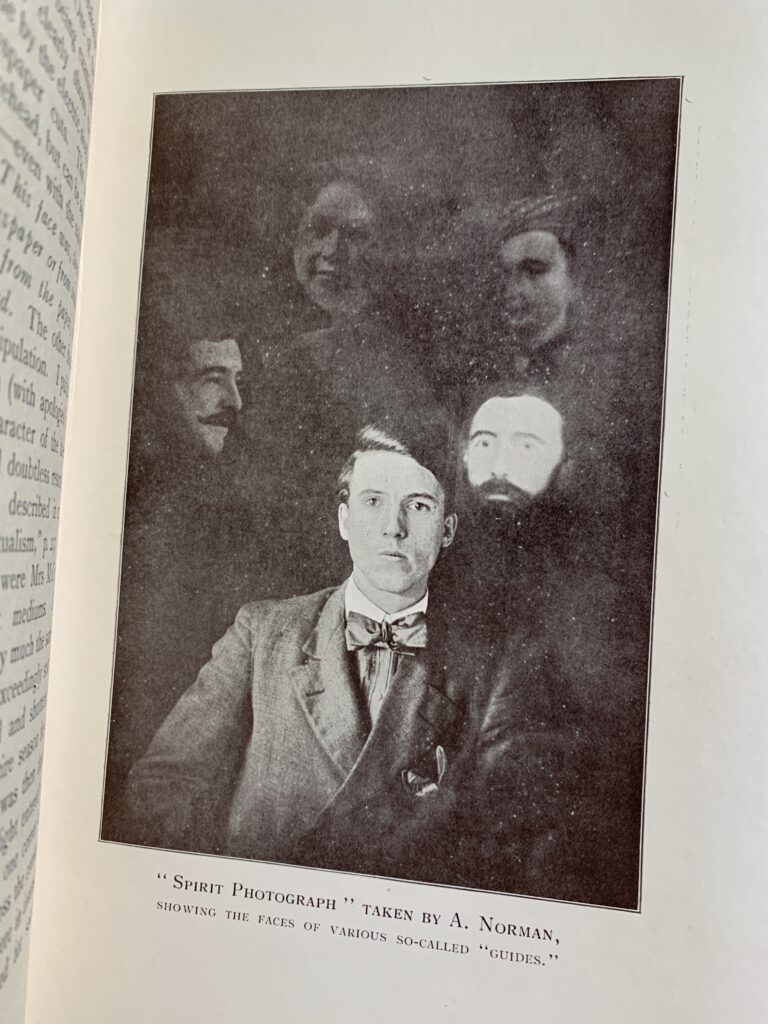
In an earlier book, The Physical Phenomena of Spiritualism, Carrington described numerous ways spirit photographers created the effect of ghostly portraits. In some cases, accomplices would dress in flowing garments that looked the part. They were then photographed with about half the time-exposure so they’d appear “dim, hazy, and indistinct” when the plate was developed. The plate would be put aside and used again for the sitter. Another method involved small pictures taken on thin, transparent celluloid that were then affixed to the lens of the camera. These figures would then appear on the plate around the living sitter.
The first spirit photographer, William Mumler, began working in Boston in 1861. He was eventually charged with fraud, but was exonerated when no one could prove he’d faked his photos.
For more on spirit photography, read my book, Chasing Ghosts: A Tour of Our Fascination with Spirits and the Supernatural (Quirk Books).
